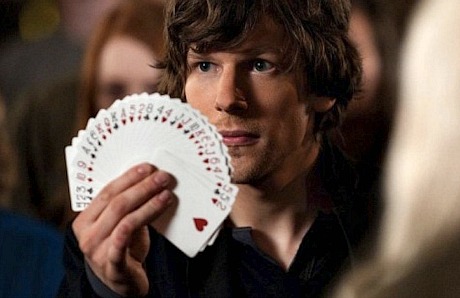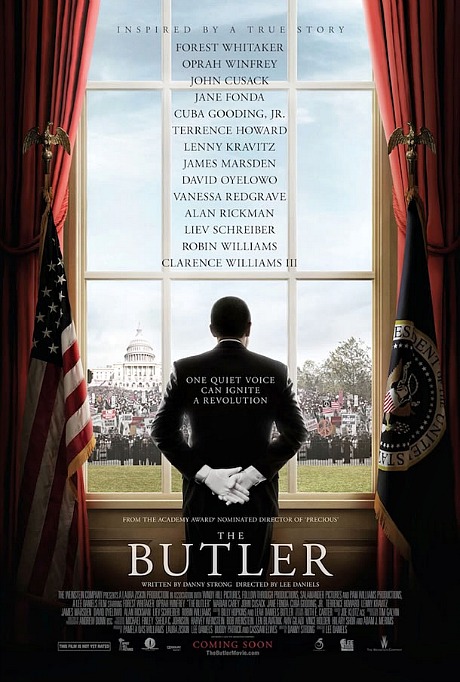Cannes buyers were shown footage (or maybe just this sizzle teaser) from Anton Corbijn‘s A Most Wanted Man and they didn’t bite. That’s because they sat and watched and said to each other in the blunt manner of F. Murray Abraham in Inside Llewyn Davis, “We don’t see a lot of money in this.” They see an austere, sombre, enticingly adult espionage drama in the vein of another Tinker Tailor Solder Spy — the kind of movie that guys like myself will probably love and which your average 20something, Man of Steel-anticipating, popcorn-munching sophisticate might rent on Netflix…maybe. Pic will undoubtedly play Toronto. Cheers to “Philly” Hoffman for delivering an excellent Armin Mueller-Stahl imitation.
 Jeffrey Wells
Jeffrey Wells
Bathroom As Womb
I’d like to amend or expand upon my three-year-old “Losers and Long Showers” observation. It hit me earlier today that I was being too specific when I wrote that taking long showers “is a sign of weak character” and that “anyone who does this is a soft sister — a person looking to hide inside the warm amniotic fluid of his mother’s womb.” What I really meant is that hiders and losers don’t just waste time taking long showers — they spend lots of time in bathrooms.
So the new rule (and I’m not trying to be provocative for the sake of page views — I really feel this is true) is that the more bathroom time you put in on a daily basis the more afraid you are of the occasional sting and chill of life.
Cheap Date

Sitting by canal at corner of Quai de Jemmapes and rue de Lancy — Wednesday, 6.5, 9:55 pm.

Same old Musee D’Orsay shot I’ve been taking since the late ’80s.

Quai de Jemmapes and rue de Lancy — Wednesday, 6.5, 9:05 pm.

Thought Themselves Accursed
Update: “The Peter Berg film tested through the roof at both Archlight and before a blue-collar audience.” — Filmmaker friend who knows and hears stuff.
Earlier: I’m feeling a natural sense of caution and concern about Peter Berg‘s Lone Survivor, which Universal has decided to open on 12.27 in order to exploit possible award-season huzzahs. Pic is basically about a Zero Dark Thirty-type mission gone wrong — about a real-life Seal Team assassination attempt on 6.28.05 that didn’t pan out and in fact resulted in everyone on the squad getting wasted except one. Pic stars Mark Wahlberg with Taylor Kitsch, Eric Bana, Emile Hirsch and Ben Foster costarring. Problem #1, for me, is that Berg directed Battleship — one of the all-time worst spectacle-monster films ever made. Problem #2 is Kitsch, who has proved that he’s not that adept at conveying intelligent thought + he’s suffered through the triple-whammy of John Carter, Battleship and Savages. I hope he gets through this. I don’t hate the guy or anything. We all go through bad patches.
Foundas Grants Reprieve To Forster-Pitt Zombies
Has the critical tide has turned on Marc Forster and Brad Pitt‘s World War Z (Paramount, 6.21)? Will anyone at Paramount give o hoot if it has? World War Z is about as critic-proof as they come, but on a deep-down level the filmmakers want the approval of the critical elite, even if Paramount marketing execs are indifferent. In any event Scott Foundas‘s Variety rave indicates that other critics may follow suit…maybe.
“Rising from an early grave of negative pre-release publicity, director Marc Forster and producer-star Brad Pitt’s much-maligned World War Z emerges as a surprisingly smart, gripping and imaginative addition to the zombie-movie canon, owing as much to scientific disaster movies like The China Syndrome and Contagion as it does to undead ur-texts like the collected works of George Romero.
Les Visiteurs


< !0--more-->


Eisenberg’s Moment of Clarity
Now You See Me star Jesse Eisenberg is anything but a jerk (which is how some Shallow Hal journos are describing him) for calling Univision’s Romina Puga “the Carrot Top of interviewers.” More actors and directors on the movie-junket circuit need to say straight-from-the-shoulder stuff like this. Chatty-Cathy TV interviewers always take the conversation in the most inane, brain-numbing directions so thank God Eisenberg briefly lost his composure and became Tommy Lee Jones and told her what he really thinks of the hideously ingratiating attitude and the soul-smothering questions that people like her tend to generate.

Well-Respected Man
Correct me if I’m wrong, but Lee Daniels‘ The Butler is about a real-life guy who just minded his own business and kept his nose clean and his shoes spit-shined and quietly did his job with class and finesse. “Honor lies in the man, my prince — not in the towel” — Jean Anouilh. Nothing he did was remotely “revolutionary.” He simply did himself proud within the sphere of a White House butler. No shame in that. If I were handling the poster, I would use the following slogan: “Not everybody blazes trails. Some just polish the silver, and that’s cool.”

Earth Is Flat
“I tried to pass the torch but that didn’t work. Life throws the occasional curveball. Not a tragedy — we just need to adapt. What you have to do is find an acting project entirely on your own, one that I have nothing to do with and which has nothing to do with, you know, Scientology. A 100% Jaden project, yours and yours alone. God bless the child who has his own. And if you act in two or three of these films, you’ll have your own thing. Even if they’re obscure, even if they fail, you’ll be in a better place. That’s my advice to you.”

I Know This Is Good
From Norwegian filmmaker Erik Skjoldbjaerg (the original Insomnia), a psychological thriller called Pioneer (Magnolia). The ’80s-set is about professional divers (played by Aksel Hennie, Wes Bentley) hired to explore for big oil companies during the Norwegian Oil Boom,” etc. Costarring Stephen Lang (Avatar), Stephanie Sigman (Miss Bala) and Ane Dahl. If you saw Insomnia, you know Skjoldfbjaerg knows how to do it right.
“Not An Ounce”?
“Right now I am not going to discuss my Deadline Hollywood contract or my relationship with my boss Jay Penske. Why? Because I don’t have to. If that changes, I’ll tell you. The fact is I’m out of town and about to begin my long-planned summer vacation. And the last thing I want is to be bothered now by a bunch of media and/or moguls asking for comment. As it happens, I was napping in a different time zone when The Wrap crapped on me yet again Sunday night. Nothing new: the desperate Sharon Waxman and her revolving door staff have been writing inaccurately about me for years, and doing it to drive traffic to her failing website, and refusing to correct even the most blatant errors.
“Last night Waxman sent a joint email to my boss and myself at 6:43 PM. She waited two whole minutes. Then she posted her story about us at 6:45 PM. That’s a rotten thing to do, not to mention bad journalism, and she knows it. And it’s yet one more reason I call her website The Crap. That said, I could pick apart her so-called ‘shocker’ line by line, but I won’t. I’d much rather spend my remaining pre-vacation time writing up some great scoops to post this week.” — Nikki Finke‘s Deadline statement, which went up yesterday morning or late yesterday afternoon Paris time, which is my walking around and savoring the aroma time.
